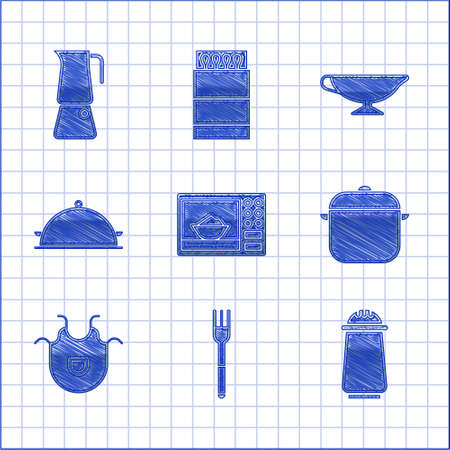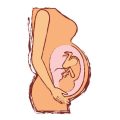Introduction to Baby-Proofing in British Homes
Welcoming a new baby into your home is a joyful and transformative experience, but it also brings a host of safety considerations, especially within the unique context of British homes. Traditional UK houses often feature architectural quirks—such as steep staircases, sash windows, fireplaces, and compact rooms—that make baby-proofing both essential and distinct from other countries. With many British families living in period properties or terraced houses, the need to adapt safety measures to fit these environments becomes even more important. Beyond physical features, British traditions like afternoon tea in the lounge or communal family spaces influence how children interact with their surroundings. By thoughtfully baby-proofing each room, parents can foster safe exploration and healthy development while respecting the character of their home. This guide offers a comprehensive room-by-room checklist tailored specifically for British households, blending practical advice with an understanding of local customs and typical layouts. Whether you live in a Victorian terrace or a modern flat, taking proactive steps will help ensure your babys environment supports both their curiosity and their wellbeing.
Living Room Safety
The living room is often the heart of a British home, where families gather and little ones take their first steps. To nurture your child’s curiosity while ensuring their safety, it’s vital to baby-proof this space thoroughly. Below is a checklist covering essential precautions for UK households:
Key Steps to Secure Living Spaces
| Hazard | Recommended Safety Measures |
|---|---|
| Fireplaces & Hearths | Install fireguards that comply with British Standards. Ensure hearth edges are covered with cushioned protectors to prevent bumps and bruises. |
| Sockets & Electricals | Use BS-approved socket covers or switch off unused outlets at the wall. Tidy away cables using cord tidies or cable covers to avoid trips and chewing risks. |
| Windows & Latches | Check British-style sash or casement windows for secure locking mechanisms. Fit window restrictors so windows only open a safe amount, reducing fall risk. |
| Coffee Tables & Sharp Edges | Add corner guards to tables and low furniture. Choose soft furnishings or rounded designs where possible. |
| Loose Rugs & Carpets | Secure rugs with non-slip pads or remove them entirely during the crawling stage to prevent slips. |
| Remote Controls & Small Objects | Store all small items out of reach in drawers or high shelves. Be mindful of coins, batteries, and beads which pose choking hazards. |
Encouraging Safe Exploration Through Interaction
Invite your child to explore the living room together, narrating what each object is for and gently guiding them away from off-limits areas. This not only builds their understanding of boundaries but also strengthens your connection as they learn through safe discovery in their own home environment.

3. Kitchen Hazards and Safe Practices
The kitchen is often the heart of a British home, filled with activity, aromas, and—unfortunately—potential hazards for curious little hands. Creating a safe kitchen environment is essential for your baby’s wellbeing and peace of mind as a parent. Here are essential tips tailored to British homes that address common risks and offer practical solutions.
Appliance Locks and Safety Devices
Modern kitchens feature various appliances that may entice toddlers—from ovens to washing machines. Use appliance locks on doors such as the oven, fridge, dishwasher, and washing machine to prevent accidental openings. Induction hob covers can also help keep little fingers away from hot surfaces.
Kettle Cords and Hot Liquids
Kettles are a staple in British kitchens, but their cords pose tripping and pulling risks. Always position kettles at the back of the worktop and use cord winders or shorteners to keep cords out of reach. Be vigilant with mugs of tea or coffee—never leave them on low tables or counters where your baby might reach up.
Cleaning Product Storage
Many British homes store cleaning products under the sink—a tempting spot for exploring infants. Move all chemicals, detergents, and dishwasher tablets to high cupboards or secure them with childproof cupboard locks. Ensure these products are kept in their original containers with labels intact.
Common Kitchen Hazards & How to Address Them
| Hazard | Risk | Safety Tip |
|---|---|---|
| Hot drinks & kettles | Burns & scalds | Keep out of reach; use kettle cord winders |
| Sharp objects (knives, scissors) | Cuts & injuries | Store in locked drawers or high shelves |
| Cleaning products | Poisoning | Use cupboard locks; store up high |
| Dishwasher tablets | Toxic if ingested | Secure with child lock; keep in original packaging |
Psychological Impact: Encouraging Healthy Curiosity Safely
A baby’s desire to explore is a vital part of their development. Rather than creating a sense of fear around the kitchen, involve your child safely by giving them age-appropriate utensils or a designated ‘safe drawer’ filled with wooden spoons or plastic bowls. This way, you nurture independence while keeping real hazards out of reach.
4. Nursery and Bedroom Precautions
Ensuring your baby’s nursery and bedroom are safe havens is essential for their development and your peace of mind. In British homes, where traditional furniture designs and varying room layouts are common, a thoughtful approach to safeguarding these spaces is vital.
Cot Safety: Meeting British Standards
Always select a cot that meets current British safety standards (BS EN 716). Check the slat gaps (no wider than 6.5 cm) and ensure the cot is sturdy with no loose parts or sharp edges. Position the cot away from windows, radiators, and cords from blinds or curtains to prevent accidents.
Bedding Safety in the UK
Overheating and suffocation risks can be minimised by following NHS guidance on bedding:
| Bedding Item | Safe Practice |
|---|---|
| Duvets & Pillows | Avoid for babies under 12 months; use lightweight blankets instead. |
| Bumper Pads | Not recommended as they pose suffocation and entrapment risks. |
| Blankets | Tuck in firmly below shoulder level; never above shoulders. |
| Sleep Bags | Use appropriate tog rating for the season (e.g., 1 tog in summer, 2.5 tog in winter). |
Typical British Furniture: Hazards & Solutions
Many British homes feature freestanding wardrobes, tallboys, and bedside tables. To prevent tip-over accidents, secure all heavy furniture to the wall using anti-tip straps or brackets. Keep nappy changing stations well-stocked but out of reach of little hands. Avoid placing decorative items, picture frames, or lamps within baby’s reach.
Key Steps for Safe Sleeping and Play Areas:
- Flooring: Use non-slip rugs and ensure play mats are free from loose threads or choking hazards.
- Window Safety: Fit window restrictors so windows open no more than 10cm; avoid placing cots near windowsills.
- Toy Storage: Choose toy boxes with soft-closing lids or remove lids altogether to prevent trapped fingers.
- Electricals: Use socket covers or move plugs out of reach, especially if you live in an older property with low sockets.
This mindful preparation nurtures both physical safety and emotional security, allowing your child to explore their world while you stay reassured—an essential balance in every British family home.
5. Bathroom Safety Measures
The bathroom can be one of the most hazardous rooms for babies and toddlers, so it’s essential to take extra precautions specific to British homes. From traditional hot water systems to compact layouts, here’s how you can ensure your family’s safety.
Precautions for British Bathrooms
British bathrooms often feature separate hot and cold taps and compact storage spaces. This means there are unique risks that need addressing:
| Hazard | Recommended Safety Measure |
|---|---|
| Hot tap burns | Fit hot tap covers or anti-scald devices to prevent accidental burns when running baths or washing hands. |
| Slippery floors and bathtubs | Place non-slip mats both inside the bath and on the floor to reduce the risk of slips, especially after bath time. |
| Chemical exposure | Store all toiletries, cleaning chemicals, and medicines in high cupboards with childproof locks or latches. Consider lockable under-sink cabinets if space is limited. |
| Sharp edges and corners | Add cushioned corner guards to low sinks or vanity units, common in British bathrooms. |
| Electrical appliances (hairdryers, shavers) | Always unplug and store appliances out of reach after use. Use socket covers if outlets are within a child’s grasp. |
Everyday Habits for a Safer Bathroom
- Never leave your baby unattended in the bath, even for a second.
- Check water temperature with your elbow before placing your child in the tub—a safe range is around 37°C (98°F).
- Keep toilet lids closed using a childproof lock to prevent accidental falls or play with water.
- Avoid leaving buckets or basins filled with water where little ones can reach them.
Supporting Safe Exploration
Your child’s curiosity is a vital part of their psychological development. Baby-proofing the bathroom not only keeps them safe but also allows you to relax during those precious bath-time moments together. By preparing this space thoughtfully, you encourage safe exploration while fostering trust between you and your little one.
6. Hallways, Stairs, and Outdoor Spaces
When baby-proofing your British home, hallways, staircases, and outdoor areas deserve special attention. Many UK homes—particularly terraced or semi-detached properties—feature steep stairs and narrow landings, making it vital to implement robust safety measures as your little one begins to explore.
Securing Staircases
Staircases are often the biggest hazard for crawling babies and curious toddlers. Installing well-fitted safety gates at both the top and bottom of stairs is essential. Opt for gates that comply with British Safety Standards (BS EN 1930:2011) and ensure they are securely fixed to the wall or banister, not just pressure-mounted if used at the top of stairs.
Checklist: Staircase Safety Essentials
| Item | Why It’s Needed | UK Tip |
|---|---|---|
| Safety Gates (Top & Bottom) | Prevents falls and restricts unsupervised access | Look for “stay-open” features for busy times |
| Bannister Guards | Covers gaps in bannisters to prevent head entrapment | Plexiglass sheets are a popular choice in Britain |
| Non-Slip Stair Treads | Adds grip to slippery wooden steps | Choose designs that blend with Victorian or Edwardian interiors |
| Clear Landings & Hallways | Reduces tripping hazards from shoes, bags, or post | Shoe racks and wall hooks keep things tidy in small spaces |
Maintaining Secure Gardens and Patios
Outdoor areas such as gardens and patios offer wonderful play opportunities but can present serious risks if not properly secured. Common British features like low walls, open garden gates, or uneven paving stones need careful management.
Outdoor Baby-Proofing Tips:
- Fencing & Gates: Ensure all boundaries are secure with sturdy fences (at least 1 metre high) and self-closing gates with child-proof locks.
- Shed & Tool Storage: Lock away gardening tools and chemicals in sheds or garages; use padlocks where possible.
- Pond & Water Hazards: Cover ponds with rigid mesh or consider temporary fencing until your child is older.
- Paving & Surfaces: Check for loose slabs or uneven ground that could cause trips; repair promptly.
- Tidy Up: Keep small objects, gravel, or sharp garden waste out of reach of little hands.
Your Child’s Perspective: Exploring With Curiosity
Remember, children view their environment as an endless adventure. Secure spaces not only protect them physically but also give you peace of mind to encourage confident exploration—whether they’re toddling down the hallway or helping you water plants in the back garden. By anticipating hazards room by room—and outdoors—you nurture both their safety and their growing independence in your uniquely British home.


